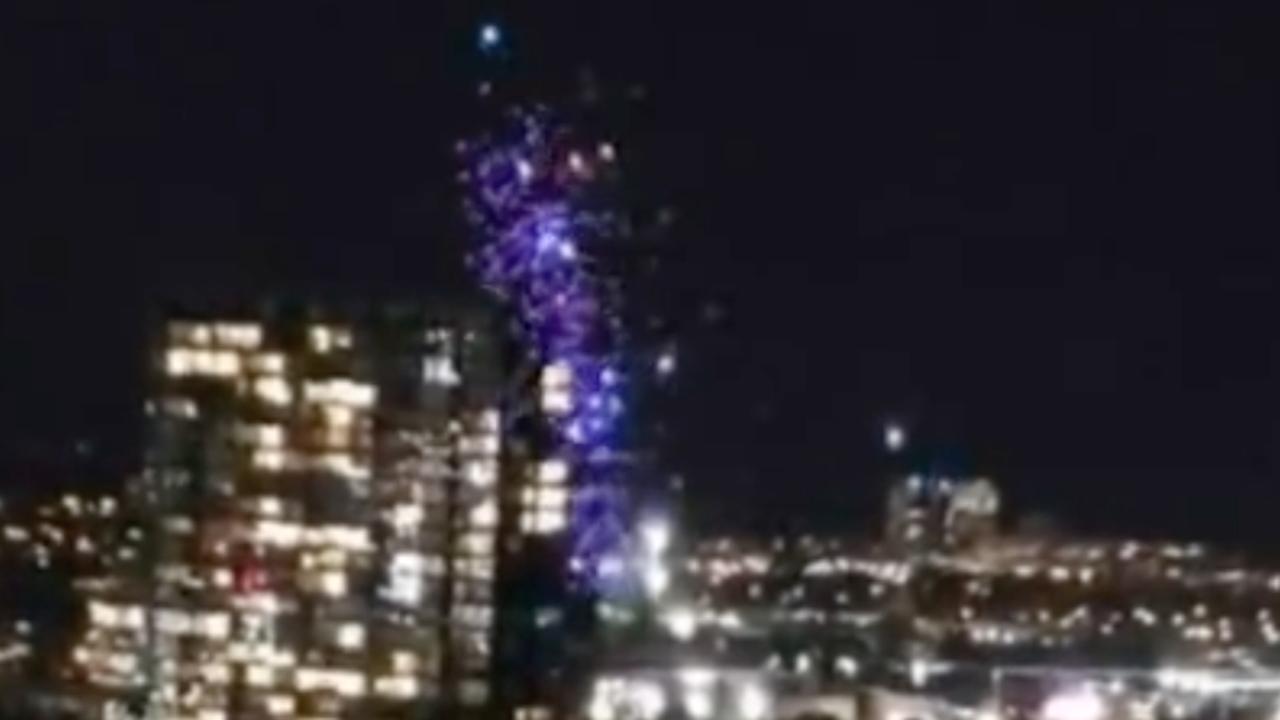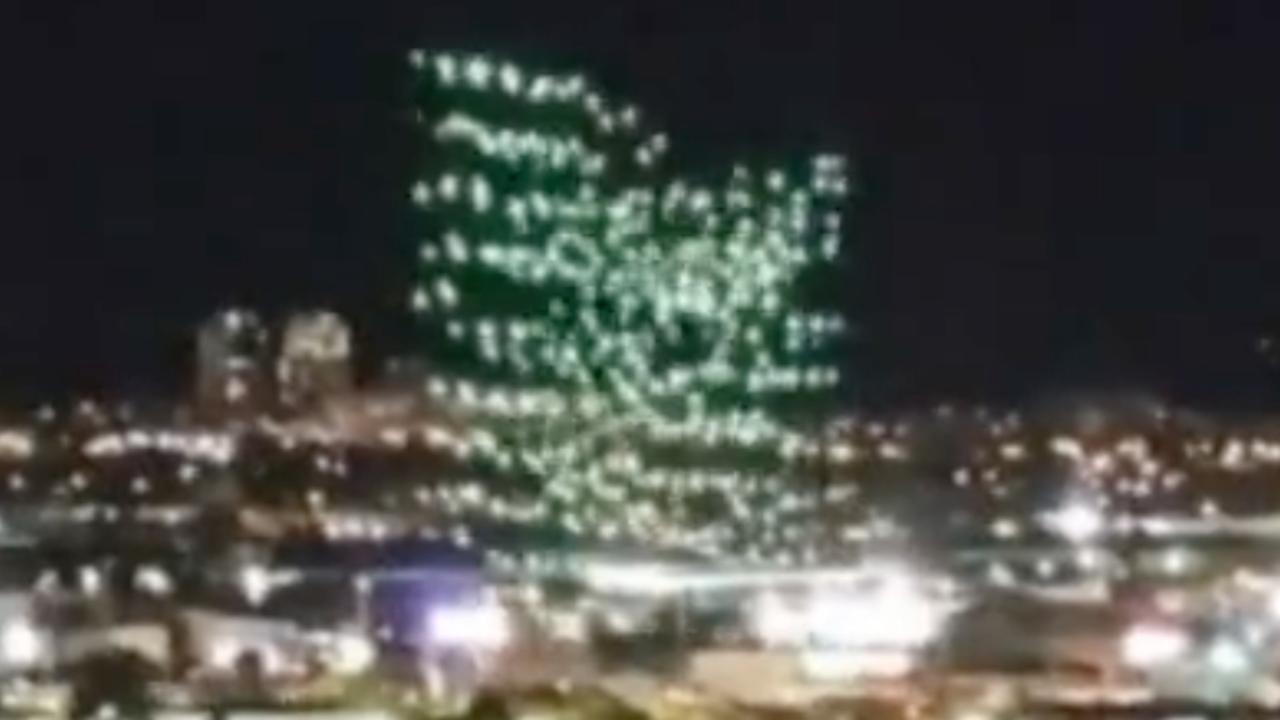Orlando drone show malfunction: The spectacular, planned aerial display transformed into an unexpected spectacle when a significant technical failure disrupted the performance. This incident, occurring on [Insert Date and Time], at [Insert Location], provides a compelling case study exploring the complexities of large-scale drone operations, highlighting both the potential and the inherent risks involved in this burgeoning technology. The malfunction served as a stark reminder of the delicate balance between technological innovation and the imperative for robust safety protocols.
This analysis will delve into the specifics of the malfunction, examining potential causes, safety implications, and the subsequent impact on public perception. We will also explore preventative measures and improvements to ensure future drone shows maintain the high standards of safety and spectacle expected by both organizers and audiences.
Orlando Drone Show Malfunction: A Detailed Analysis
This article provides a comprehensive analysis of a drone show malfunction that occurred in Orlando, focusing on the event details, the nature of the malfunction, potential causes, safety implications, and the aftermath. We will also explore preventative measures and the public’s reaction to this incident.
Event Details and Context
A large-scale drone show, planned as a spectacular nighttime display, took place on [Insert Date] at [Insert Time] in [Insert Location, Orlando]. The show featured approximately [Insert Number] drones programmed to create dynamic formations and visual effects, including [Insert Specific Examples of Visual Effects, e.g., animated characters, logos, and abstract patterns]. The weather conditions during the show were [Insert Weather Description, e.g., partly cloudy with light winds, or clear skies with calm winds].
The Orlando drone show malfunction highlights the inherent risks in large-scale drone operations. Such incidents underscore the need for rigorous safety protocols, as evidenced by the unfortunate consequences detailed in a recent report on a florida drone accident. Understanding the causes of these malfunctions, whether software glitches or environmental factors, is crucial for preventing future incidents and ensuring the continued safe development of drone technology in Orlando and beyond.
Specific details about wind speed and direction are crucial for assessing potential environmental factors.
Nature of the Malfunction
During the [Insert Stage of the Show, e.g., midpoint, finale], a significant malfunction occurred. [Insert Number] drones experienced [Insert Type of Malfunction, e.g., a simultaneous loss of signal, software failure causing erratic movements]. This resulted in [Insert Description of Observable Effects, e.g., several drones falling from the sky, drones drifting from their programmed formations, and a disruption of the planned visual sequence].
The specific model of drones involved was [Insert Drone Model, if known], and the malfunction impacted the overall visual presentation, leading to an abrupt end to the show.
Potential Causes of the Malfunction
Several factors could have contributed to the malfunction. Technical issues such as software bugs within the drone’s flight control system, communication interference (e.g., GPS signal disruption or radio frequency interference), or hardware failures in the drones themselves are possible causes. Environmental factors, such as unexpectedly strong wind gusts or electromagnetic interference from nearby sources, could also have played a role.
Finally, human error, such as incorrect programming of the drones or inadequate pre-flight checks, cannot be ruled out.
Safety and Security Implications, Orlando drone show malfunction
The malfunction posed several safety risks. Falling drones could have injured spectators or caused property damage. While specific safety protocols for drone shows (e.g., designated flight zones, emergency shutdown procedures, and spectator safety barriers) were likely in place, their effectiveness during this incident needs to be evaluated. The response of show organizers and emergency services to the malfunction will be a key area of investigation to determine if established procedures were followed correctly and efficiently.
The speed and effectiveness of the response will be vital in determining the overall success of safety protocols.
The recent Orlando drone show malfunction, causing a brief interruption to the spectacle, highlights the complexities of large-scale drone operations. This incident prompts reflection on the technological challenges involved, especially when considering the scale and sophistication of drone deployments elsewhere, such as the recent ukraine drone attack on russia , which showcased both the potential and the inherent risks associated with such technology.
Ultimately, both events underscore the need for robust safety protocols and advanced technology to ensure reliable performance in diverse applications.
Impact and Aftermath
The malfunction abruptly ended the drone show, leaving the audience disappointed. Reports of [Insert Information Regarding Injuries or Property Damage, e.g., no injuries or property damage, or specific instances of minor injuries or property damage] emerged following the incident. Official investigations by [Insert Investigating Bodies, e.g., the FAA, local authorities] are underway to determine the exact cause of the malfunction and to implement corrective measures.
Statements released by show organizers should be analyzed for transparency and accountability.
| Date | Time | Event | Impact |
|---|---|---|---|
| [Insert Date] | [Insert Time] | Drone show commences | Successful initial stages |
| [Insert Date] | [Insert Time] | Drone malfunction begins | Multiple drones deviate from formation; show ends prematurely |
| [Insert Date] | [Insert Time] | Emergency services respond | Assessment of situation and spectator safety |
| [Insert Date] | [Insert Time] | Official investigation launched | Determination of root cause and safety improvements |
Preventative Measures and Future Improvements
To prevent similar incidents, several improvements are necessary. Enhanced safety protocols, including more robust redundancy systems in drone control software and hardware, should be implemented. Regular and rigorous testing of drone systems and flight software is crucial. Improved communication systems to maintain reliable control during unforeseen circumstances are also necessary.
- Implement redundant control systems.
- Conduct thorough pre-flight checks and simulations.
- Develop more robust GPS and communication systems.
- Establish clear emergency response protocols.
- Increase operator training and certification standards.
Public Perception and Media Coverage
Public reaction to the malfunction ranged from disappointment to concern about drone safety. Media coverage varied, with some outlets focusing on the spectacular nature of the show prior to the malfunction, while others highlighted the safety risks and potential causes of the incident. The narrative presented in news reports and social media will influence public trust in drone technology and future drone shows.
Analyzing public sentiment through social media monitoring can offer valuable insights.
Illustrative Description of the Malfunction

Initially, the drones formed a coherent and captivating image of [Insert Initial Formation Description]. As the malfunction began, several drones started to deviate from their programmed paths, displaying erratic movements, including sudden changes in altitude and direction. Some drones exhibited flickering or unusual light patterns. The intended image gradually dissolved into a chaotic jumble of lights, with drones moving independently and at varying speeds.
The final image before the show’s abrupt end was a scattered, disorganized display, a stark contrast to the intended cohesive visuals.
The recent Orlando drone show malfunction highlighted the inherent risks in large-scale drone displays. One wonders if the reliability issues experienced might have been mitigated by utilizing a more robust system, perhaps one employing the advanced technology showcased by sky elements drones , known for their sophisticated flight control and safety features. Ultimately, the Orlando incident underscores the ongoing need for improved drone technology and stringent safety protocols for these increasingly popular spectacles.
The Orlando drone show malfunction underscores the critical need for rigorous testing, comprehensive safety protocols, and ongoing technological advancements in the field of drone technology. While the incident resulted in [mention brief summary of impact, e.g., a temporary disruption and some minor concerns], it also presented a valuable opportunity for learning and improvement. By analyzing the event’s causes and consequences, the industry can strive to prevent similar incidents, ensuring that future drone shows continue to captivate audiences while prioritizing safety and security.
FAQ: Orlando Drone Show Malfunction
Were there any injuries reported due to the malfunction?
[Insert answer regarding injuries. If none, state that clearly.]
What was the estimated cost of the damage caused by the malfunction?
[Insert answer regarding cost of damage, if available. If unavailable, state that the information is not yet publicly available.]
How long was the drone show delayed or interrupted?
[Insert answer regarding duration of interruption.]
What type of drones were used in the show?
[Insert answer regarding the type of drones used. Include manufacturer if known.]


